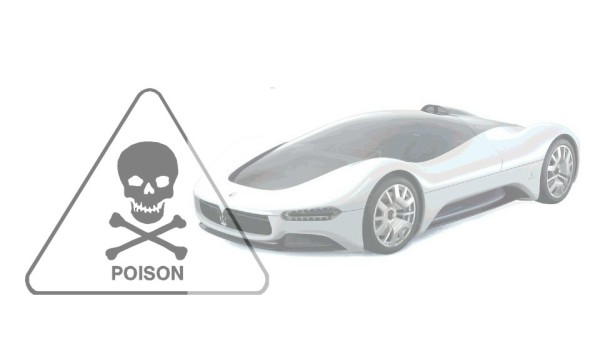Brian Turner is an avid reader and fan of Motoroids. He wrote to us a while back expressing his wish to write about toxic wastes used in automobiles and their hazards. Here’s what Brian has to say about the subject. Brian Turner is an avid reader and fan of Motoroids. He wrote to us a while back expressing his wish to write about toxic wastes used in automobiles and their hazards. Here’s what Brian has to say about the subject. Brian is British / Irish and was born in Syracuse, New York. His interests are looking at all types of cars like classics, tuner, muscle, import, supercars, etc. He likes to research and write about inherent toxic hazards in automobiles. Brian also likes to watch and play sports, hanging out with friends and having fun. He has have recently been accepted as a staff contributor to the Mesothelioma Cancer Alliance Blog where he posts about the cancer risks that toxins such as asbestos pose.
Do let us know your views on the topic too via our comments section so that Brian may get his feedback
One of the most iconic images of Americana is riding in the family car. Modern life revolves around personal vehicles, and these cars are a reflection of an individual’s finances, personal status, and lifestyle. Over the past 50 years, vehicles have been made from a variety of materials, including toxic chemicals. Over time, many of these chemicals have been discovered as carcinogenic, and mutagenic. While the auto industry is required by law to disclose any potentially toxic construction materials used in manufacturing, new petrochemicals, polymers, and rare earth chemicals are increasingly used in modern vehicles.
One of the oldest and most common toxins in vehicles is asbestos. Asbestos is a natural mineral, used to manufacture fibers, textiles, and insulation. Asbestos, whichis not electrically conductive, possesses a high tensile strength and is effective at dampening noises. Because of these properties, asbestos was used in vehicle manufacture for many years in the 20th century. Many components, such as the noise dampener under the vehicle hood, insulation wires, and some vehicle seats were manufactured from asbestos. As these vehicles were driven, fine fibers of asbestos drifted into the cabin air of vehicles. These fine fibers were too small to be seen, and occupants inside the vehicles were unaware of being exposed to asbestos.
Asbestos fibers lodge in the lungs, and can cause a form of cancer known as mesothelioma. It took many years for asbestos to become associated with cancer and respiratory malfunction, as health groups are still reporting rising numbers of asbestos victims.
Many modern vehicles contain a variety of potentially lethal components. Modern vehicles contain advanced battery systems, integrated electronics systems, and LCD screens. Many of the electronics in modern vehicles contain hazardous metals, including mercury in LCD screens, cadmium, barium, cesium, and other components that can be a health hazard.
Most of the dangerous components in vehicles are contained in sealed areas of the vehicle, reducing the risk of exposure. Unfortunately, many of the components such as the plastic dashboard can contain hazardous chemicals.
One chemical that has come under media attention in recent years is Bisphenol A (BPA) BPA in an industrial chemical used in the manufacture of many plastics. The interior of many recent vehicles have been shown to contain moderate levels of BPA in the ambient air. BPA is similar to estrogen in the human body, and can cause heart disease and some types of cancer. Vehicles in warm weather emit higher levels of these binding chemicals, and can reach levels that are hazardous to occupants.
Many watchdog groups are conducting ambient air and surface tests in new vehicles, to determine potential risks for consumers. The ‘new car’ smell that many vehicles have may be a popular scent, but likely contains a variety of industrial toxins.


The range and the top speed are quite amazing.. But what about maintenance of the batteries? The looks has to look somewhat professional. Then, yes the sales of these scooters will touch peaks.
Not bad at all. Only if the styling could improve.